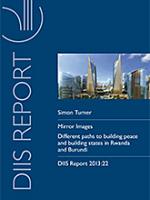Are strong states and economic development the solution to ending conflicts in Africa?
Since the massive violence in the 1990s, Rwanda and Burundi have moved in two very different directions in terms of peace and state building. Rwanda is following a path of social engineering, creating a radically new national identity with a new citizenry in order to break with what is perceived as a national culture that led to the genocide. Because the conflict ended with a clear winner in 1994, the state has the moral legitimacy to carry through with its policies, and any opposition may be dismissed as supporting divisionism and genocidal ideologies. While Rwanda is concerned with social engineering, Burundi is concerned with what we might term ‘consociational engineering’. In other words, the complex, time consuming and often frustrating path out of conflict has been characterised by constant negotiations with countless factions and complex power-sharing deals, trying to take the concerns of all parties into account.
The report argues that Rwanda appears to be ahead of Burundi in terms of economic growth, political stability and statebuilding. Likewise, it appears that national unity has replaced ethnic tensions. On closer scrutiny, however, these achievements may only be temporary. In the long term, Rwanda risks renewed violence because of a lack of social justice and popular legitimacy of the state. Burundi, on the other hand, appears to be achieving meagre economic growth and is experiencing political instability. However, the report argues that the long and complex path that Burundi has chosen, may prove to be more durable in the long run.
